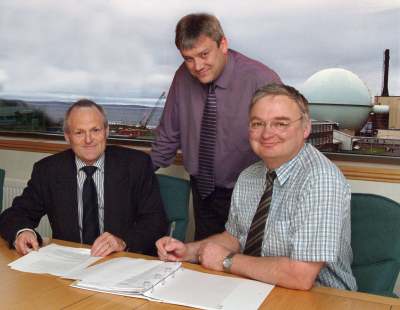| Dounreay Index |
|
||||
|
15
September 05 The contract involves working with UKAEA and stakeholders to prepare the planning application which will be submitted to the Highland Council, applications that will be required by the Scottish Environment Protection Agency and documents that may be required to comply with the terms of a nuclear site licence. Jacobs Babtie will be assisted in producing these comprehensive documents by Galson Sciences Ltd. Extensive consultation carried out by UKAEA recently identified the construction of a new disposal facility at Dounreay as the Best Practicable Environmental Option for managing low-level waste from the site clean-up. Subject to consents, the new facility is expected to be available around 2011.
Ian Williamson, Divisional Director with Jacobs Babtie, said: “Having been involved in the development of the BPEO, Jacobs Babtie is delighted to have been awarded the contract to take this important project forward through the planning process and beyond. The low level waste project requires an integrated team approach, which will see our planning, environmental, engineering and safety personnel working very closely with the UKAEA project team and with our specialist sub-consultants. We particularly welcome the opportunity to deliver much of the project from our local office in Scrabster.” Measuring The Problems In Double
Decker Buses Decommissioning of Dounreay is expected to generate between 64,000 cubic metres and 109,000 cubic metres of new solid low level radioactive waste (which is equivalent in volume to between 450 and 750 double-decker buses). In March 2005, following extensive public participation in the long-term options, UKAEA concluded that the Best Practicable Environmental Option for Dounreay’s LLW was the construction of a new disposal facility at Dounreay. More information about low-level waste at Dounreay, the views of stakeholders and UKAEA’s strategy can be found at http://www.ukaea.org.uk/dounreay/low_level_waste.htm In Spring 2002, in accordance with the 1998 Safety Audit by regulators, UKAEA applied to SEPA for consent to dispose of some LLW arisings to the national disposal facility at Drigg, Cumbria, as an interim measure pending agreement and implementation of a long-term strategy. In May 2005 Scottish Executive ruled out this option. |
|||||
